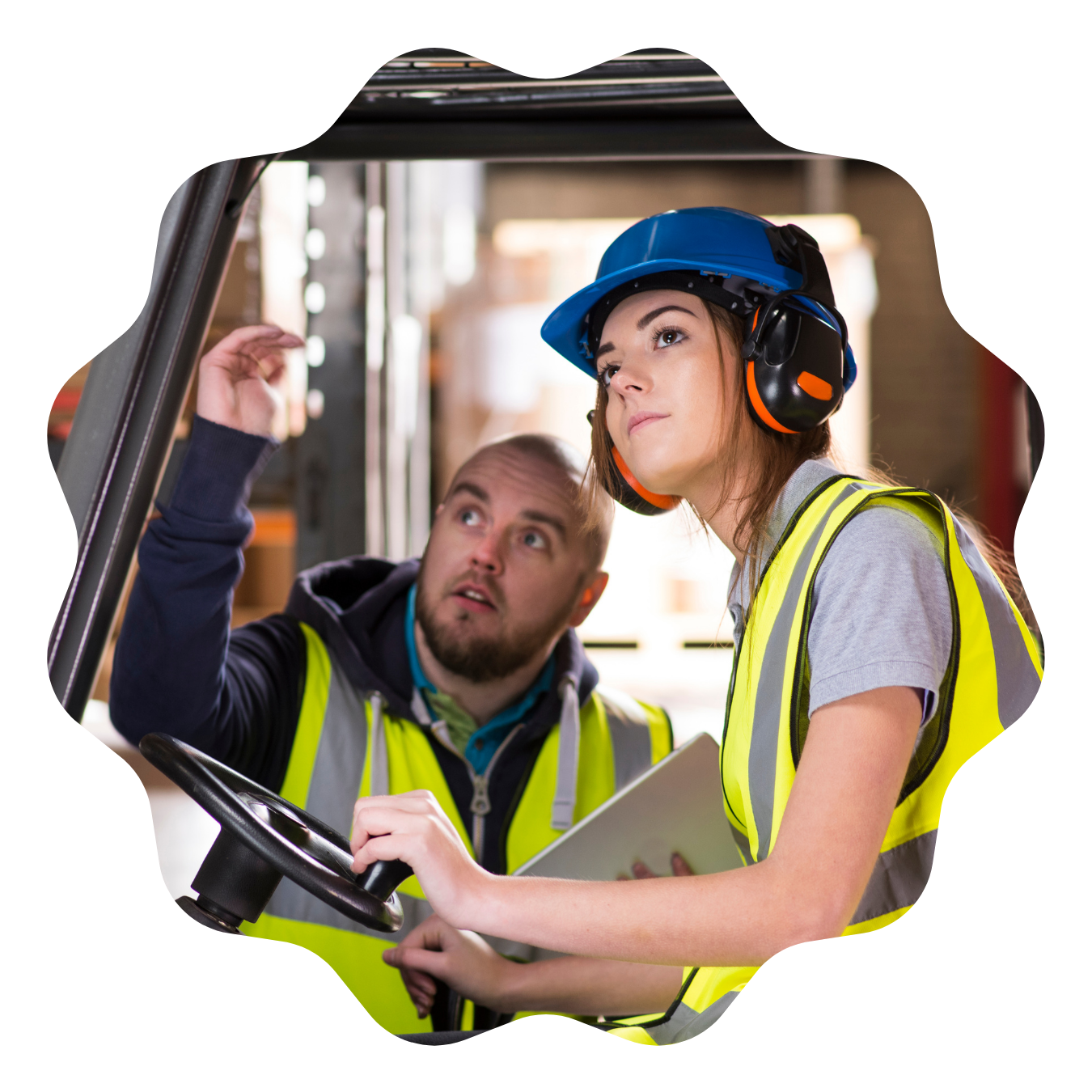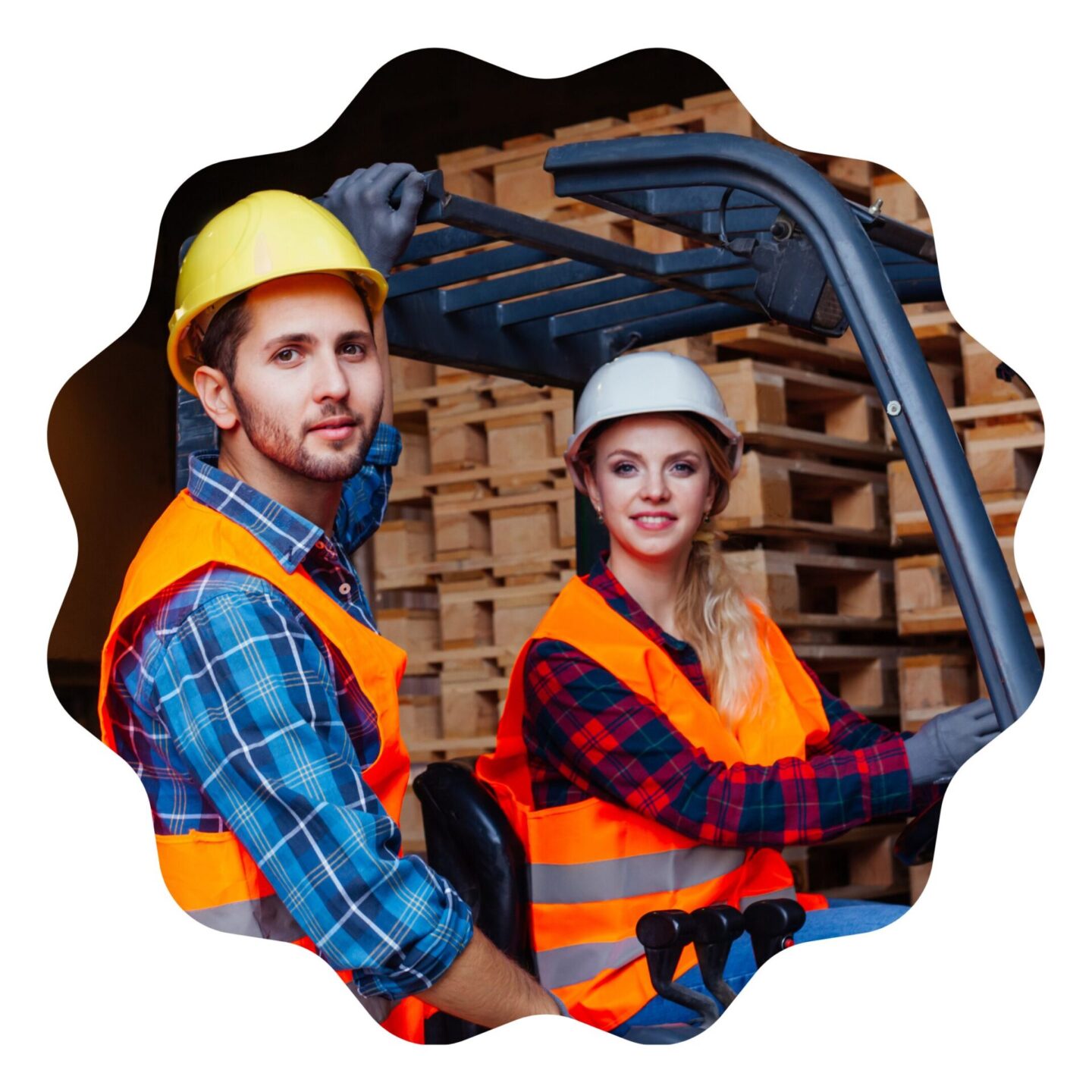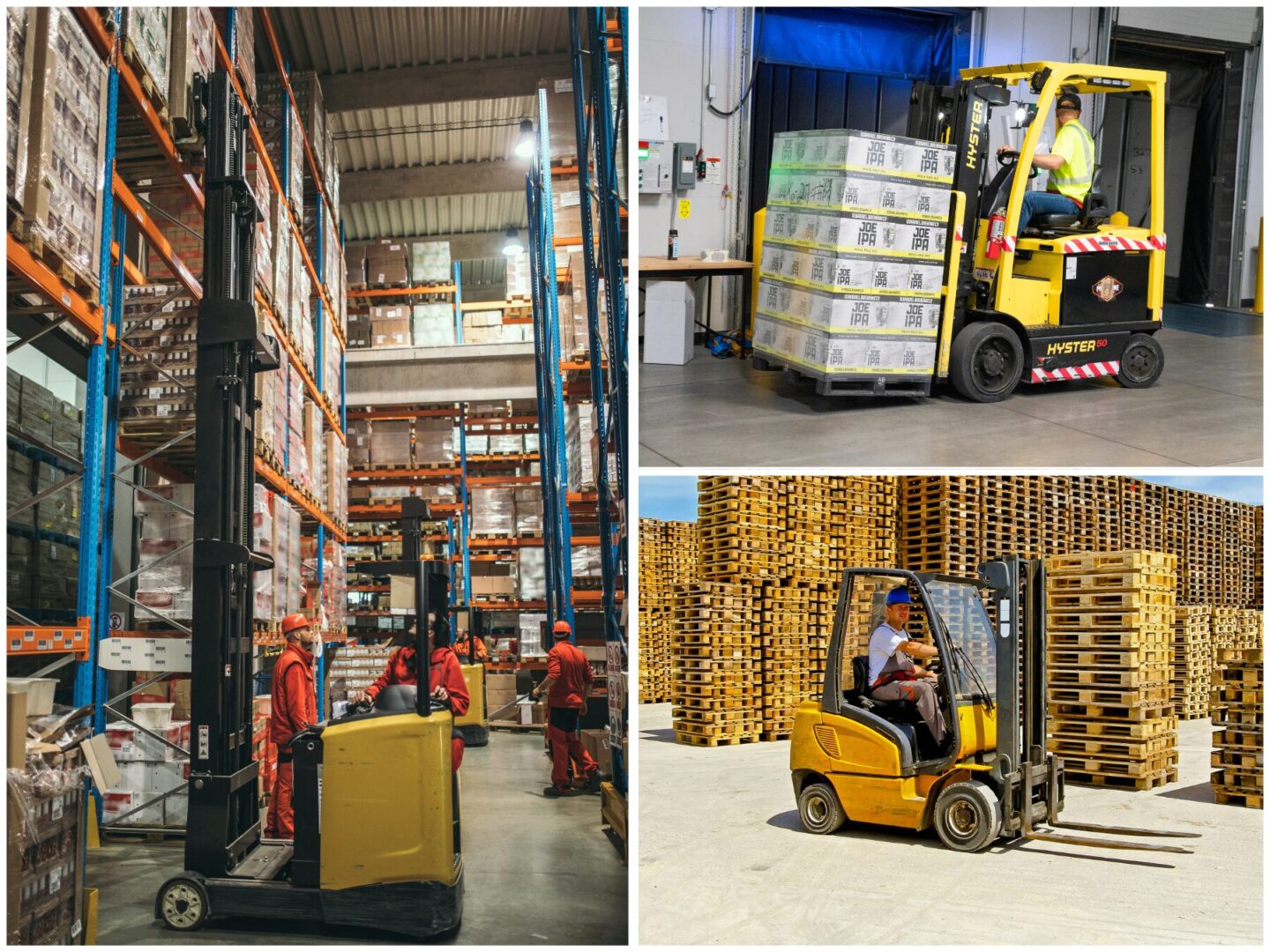Everyone plays a role in promoting forklift safety.
Forklifts (also referred to as industrial trucks), are typically found in warehouses, factories, production facilities and on construction sites. They are used to lift, stack, and transfer crates, drums, pallets, and other materials from one location on site to another. Forklifts are an essential tool in many workplaces and can significantly improve operational efficiency. However, forklift operation carries a heightened element of risk, with hundreds of injuries reported every year in Australia.
Taking shortcuts while driving a forklift can lead to injury, damaged goods, and sometimes death. Is it worth the risk?
June 10 is Forklift Safety Day. – If you, or someone you care about is a forklift operator, this is a reminder to ALWAYS take care around forklifts, not just on Forklift Safety Day but EVERYDAY! With that in mind, let’s take a closer look at the types of hazards to watch out for, what you should wear, how to prepare before each shift, and what not to do behind the wheel.
Common Hazards
Each work site is different, but the hazards around forklifts are often the same:
1. Pedestrian traffic
Forklift operators often share a working environment with other staff, such as order pickers, storepersons, and labourers. Blind spots, tight corners, poor lighting, and heavy foot traffic can be a recipe for disaster.
According to Safe Work Australia, being hit by moving machinery (like a forklift) is one of the leading causes of workplace injury. Collisions between pedestrians and forklifts often occur when there are no physical boundaries or defined zones. If a person enters a forklift operation zone whilst the forklift is in use, the forklift operator must stop immediately and inform the person to leave the zone before continuing.


2. Poor visibility
Large loads can block your line of sight. Driving with a raised load or reversing in tight areas without a clear view can lead to collisions.
3. Forklift instability or unstable loads
If the load isn’t properly balanced or secured, it can fall off during transport, leading to crushed goods or injuries.
4. Environmental hazards
It is not uncommon for a forklift driver to operate a forklift in a dusty, wet, or oily environment. Like driving a car, these conditions can be hazardous and require extra caution. When driving on a ramp, slope, or uneven surface, it’s important to be alert and drive with care.
5. Faulty equipment and mechanical errors
Like any vehicle, forklifts need regular checks. It is part of a licenced forklift operator’s role to check that the forklifts they operate are in safe working condition. Part of this responsibility includes a daily check of tyres, forks/tynes, seating, controls, warning devices (audible and visible), fluid levels, brakes and steering, and masts. Faults or malfunctions should be reported to either a supervisor or a maintenance department as soon as they occur.
How to be Forklift Ready
Being forklift-ready means more than hopping in the driver’s seat. Preparation is key to staying safe.
1. Have your HRW licence handy.
A person who operates a forklift MUST hold a high-risk work forklift licence.
Here’s how you get it:
- You must be at least 18 years old.
- Complete a course at a Registered Training Organisation (RTO). This includes classroom learning and hands-on forklift training.
- After your training, you’ll take a written and practical test.
- Once you pass, you can apply for your HRW. You can easily submit an applicationfor a licence with your state or territory’s workplace safety authority.

2. Wear the right gear.
PPE (personal protective equipment) can protect you and others from worksite accidents.
Here’s what you need:
- High-visibility clothing: To stand out to other workers on site.
- Steel-cap boots: To protect your feet if something heavy or sharp falls on them.
- Fitted clothing: Loose items can get caught in machinery.
- Hard hats: When there is a risk of overhead impact or falling items.
- Hearing protection: If working in a noisy environment or on a site with multiple machines.
3. Conduct pre-start safety checks.
A forklift safety check must be conducted every time you use a different forklift and at the beginning of each shift.
When inspecting the forklift, it’s important to look out for:
- Leaks (hydraulic or fuel).
- Incorrect fluid levels.
- Poor tire condition.
- Any issues with the lights, horn, and brakes.
- Any warning signals.
If something doesn’t look or feel right, report it. Never assume someone else already has.

4. Know your load limit.
Every forklift has a maximum load capacity. It is important that you are aware of this before you start loading it up. Loading the forklift beyond its capacity can cause the forklift to tip, which can not only damage the goods, but can cause serious injury.
5. Check your surroundings.
Be aware of the path you’ll take. Look out for any obstructions, tight turns, and pedestrian zones.
What NOT to do:
Some of the biggest safety risks come from rushing or bending the rules.
NEVER:
- Use a forklift without certification.
- Carry passengers. Forklifts are designed for one operator.
- Drive with an elevated load. This can obscure your view and affect stability.
- Speed or make sharp turns. This can cause the forklift to tip.
- Use your phone. Like any vehicle, focus is critical.
- Drive under the influence. Whether it’s drugs, alcohol, or prescription medication, impaired driving is a serious safety violation.
Forklift safety is a shared responsibility.
Whether you’re behind the wheel or working on the floor, everyone on site plays a role in promoting forklift safety. In our blog on workplace safety, we talk about creating a culture where safety isn’t just a box to tick, but a daily commitment.
On June 10 (and every other day) let’s remind ourselves and our mates: Safety isn’t optional.
If you work with forklifts: assess your environment, wear your PPE, and follow procedures. A few extra seconds of care can prevent a lifetime of regret.
Forklift Safety Day is once a year. Staying safe? That’s every day.
Looking for work? Join a team that puts your safety at the top of the list! Staff Australia complies with the statutory requirements of all state based Workcover authorities, Regulations and Legislative Acts. We are committed to working with our clients and staff to prevent injuries and minimise lost time due to injuries.


